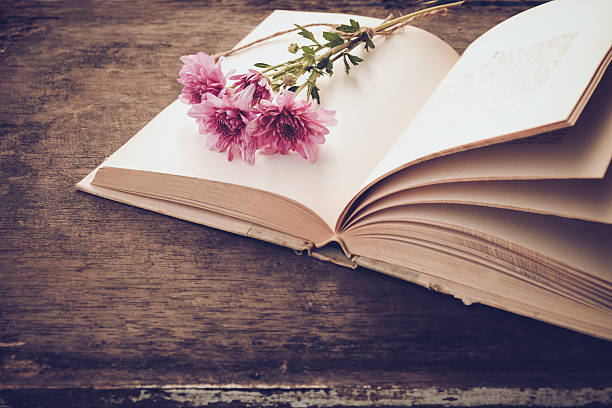Hindi literature boasts a rich and diverse collection of novels that are sure to captivate readers of all ages and backgrounds. From timeless classics to modern works, Hindi novels explore a wide range of themes such as love, family, society, politics, and more. Reading Hindi novels not only allows one to appreciate the beauty of the language but also provides a glimpse into the history and culture of India.
Some of the most notable Hindi novelists include Munshi Premchand, Jaishankar Prasad, Harivansh Rai Bachchan, and more recently, Amish Tripathi and Chetan Bhagat. These authors have crafted powerful stories that have stood the test of time and continue to resonate with readers today.
Whether you’re looking for a classic work of literature or a modern page-turner, there’s something for everyone in the world of Hindi novels. So why not dive in and discover the magic of Hindi literature for yourself?
“Godan” by Munshi Premchand


Munshi Premchand, one of the greatest Hindi writers of the 20th century, wrote the classic novel “Godan.” The novel is set in provincial India and depicts the existence of unfortunate ranchers and their battles. It’s a strong and moving depiction of the social and financial imbalance that existed in India during the pre-freedom period.
Hori, a poor farmer who longs to own a cow because he sees it as a sign of wealth and prosperity, is the protagonist of the novel. But because he’s poor, he can’t buy a cow, so he has to borrow money from the local moneylender, which has high-interest rates. The plot of the book demonstrates how Hori’s desire for a cow compels him to take desperate measures that, in the end, result in his downfall.
The novel is a scathing attack on social inequality and the caste system that existed in India prior to independence. It shows how the upper standings exploit and mistreat the lower positions, and how the poor are compelled to live in an unending condition of obligation and destitution.
Additionally, the novel is a moving account of human nature. It demonstrates how people struggle to survive in a hostile and unforgiving world. It demonstrates the way that even the littlest dreams and wants can be far off for the people who are naturally introduced to neediness.
The way “Godan” depicts the relationship between humans and animals is one of its most powerful aspects. The cow, which is a focal image in the novel, isn’t simply a wellspring of milk and meat, yet in addition an image of adoration and empathy. The novel demonstrates the interdependence of humans and animals and how their well-being is frequently dependent on one another.
In conclusion, readers have enjoyed “Godan” for decades because it is a powerful and moving novel. It is a demonstration of Munshi Premchand’s expertise as an essayist and his capacity to catch the embodiment of the human condition. Anyone who is interested in Hindi literature, social commentary, or just a good story should read the book.
“Raag darbari” by shrilal shukla


One of the most well-known Hindi authors of the 20th century, Shrilal Shukla, is the author of the satirical novel “Raag Darbari.” The novel is set in an imaginary town in Uttar Pradesh and depicts the defilement and nepotism that exist in the country of India. It is a witty and entertaining read that offers a sharp critique of the Indian political and social system.
The original recounts the tale of Ranganath, a young fellow who gets back to his tribal town in the wake of finishing his examinations in the city. He finds himself quickly drawn into politics and corruption, where he learns that the village is run by a group of powerful people who use their influence to harm the poor and oppress them.
We are introduced to the intricate and frequently contradictory nature of Indian society through Ranganath’s eyes. We see the conflict between custom and innovation, between the old and the new. We observe how individuals frequently find themselves caught between their desire for change and their fear of the unknown.
“Raag Darbari’s” use of humor and satire to expose Indian society’s corruption and nepotism is one of its most striking features. One-liners, clever wordplay, and subtle social commentary fill the book. It demonstrates how effectively humor can be utilized to expose the establishment’s flaws and criticize them.
Additionally, the novel has a potent philosophical undercurrent. It investigates the idea of force, defilement, and profound quality, and poses principal inquiries about the idea of human culture. It demonstrates how even the most well-intentioned people can be corrupted by power and how corruption can spread like a disease to everyone it touches.
In conclusion, “Raag Darbari” has stood the test of time as a powerful and thought-provoking novel. Anyone who enjoys a good story, political satire, or Hindi literature should read it. The original shows us the best and most exceedingly awful of human instinct, and it helps us to remember the significance of remaining cautious against debasement and unfairness.
“Madhushala” by Harivansh Rai Bachchan


“Madhushala” by Harivansh Rai Bachchan is probably familiar to anyone who enjoys Hindi poetry. This sonnet is really a work of art and has enamored perusers for ages.
“Madhushala” is made out of 135 quatrains that remain solitary as individual sonnets. The poet invites the audience to a “Madhushala,” or wine house, where they can enjoy life’s simple pleasures. Like the wine itself, the imagery is vibrant and intoxicating.
But “Madhushala” does more than just celebrate the pleasures of drinking. It delves into the human experience and the deeper meaning of life. It investigates our desires, the agony of loss, and the search for meaning in a world where meaninglessness frequently appears.
“Madhushala’s” masterful use of metaphor and symbolism is what sets it apart. The “Madhushala” comes to represent the human heart, and the wine comes to represent the good and bad times in life. The deeper truths of our existence are revealed by these symbols, which motivate us to live with passion and purpose.
To put it plainly, “Madhushala” is a strong and moving sonnet that will have an enduring effect on any individual who understands it. If you’re interested in Hindi poetry or philosophy or just want to read a great book, you should read it.
“Gunahon Ka Devta” by Dharamvir Bharati


Dharamvir Bharati wrote the Hindi novel Gunahon Ka Devta, which was first published in 1949. The novel is a work of art of Hindi writing and is viewed as an exemplary of Indian writing. In the context of India after independence, it is a tale of love, betrayal, and redemption.
The original’s hero is Chandrakumar, a young fellow who is an educator by calling. He is a loner and is profoundly submerged in his viewpoints. He meets Sudha, a young girl who is his landlord’s daughter, one day. Sudha is engaged to someone else, but Chandrakumar falls in love with her.
Chandrakumar’s adoration for Sudha is extreme and all-consuming, and he becomes fixated on her. He can’t decide between his love for Sudha and his morals. He is unable to stop his love for Sudha, even though he is aware that it is wrong. He ends up being progressively baffled and furious with his general surroundings, and this leads him to settle on a few terrible decisions.
Chandrakumar’s obsession with Sudha grows stronger throughout the narrative. He will successfully win her adoration, regardless of whether it implies selling out his qualities. In contrast, Sudha is torn between her love for Chandrakumar and her duty to her fiancé.
The novel investigates the intricacies of human connections and the different shades of affection. It delves deeply into the characters’ minds and reveals their deepest fears, desires, and flaws. The characters are shown with a lot of care, and the author writes in a lyrical and moving style.
There’s more to Gunahon Ka Devta than just a love story. It is a remark on the values and standards of Indian society after independence. The society depicted in the novel is undergoing change, and the characters are having trouble accepting it. The characters and their struggles are realistically and insightfully portrayed by the author.
Gunahon Ka Devta is, in conclusion, a timeless Hindi literature masterpiece. The original’s investigation of affection, profound quality, and cultural standards is as yet applicable today. It is a must-peruse for anyone with any interest in Indian writing and culture.
“Kamayani” by Jaishankar Prasad


Jaishankar Prasad, one of the most well-known Hindi poets and playwrights of the 20th century, wrote the lengthy narrative poem “Kamayani.” The poem has become a standard in Hindi literature due to its profound examination of human nature.
The theme of the poem, which is humanity’s nature and its search for meaning in a world that is constantly shifting, is set against the backdrop of a massive flood. The hero of the sonnet is Manu, the antiquated Hindu lawgiver, who is battling to find some peace with the obliteration created by the flood.
The use of symbolism in “Kamayani” is one of its most striking features. The flood turns into a representation for the repetitive idea of life, with its snapshots of creation, obliteration, and reestablishment. The sonnet additionally investigates the idea of want, and how our cravings can in some cases steer us off course, making us move away from our actual selves.
The sonnet is written in an exceptionally expressive and melodic style, with a rhythm that is suggestive of the old Sanskrit legends. A powerful and immersive reading experience is created by the language, which is rich and evocative.
The sonnet additionally investigates the job of society and culture in forming our feeling of personality and our comprehension of the world. It teaches us that our cultural beliefs and practices can sometimes be restrictive and that if we want to grow and change as people, we need to be open to new experiences and ways of thinking.
In conclusion, “Kamayani” is a powerful and profound piece of literature that delves into the most fundamental aspects of human existence. The cyclical nature of life, the power of desire, and the role that culture plays in shaping our understanding of the world are all celebrated in this poem. It’s a must-peruse for anyone with any interest at all in Hindi verse, reasoning, or essentially a decent perused.
“Chandrakanta” by Devaki Nandan Khatri


One of Hindi literature’s most significant authors, Devaki Nandan Khatri, wrote the novel “Chandrakanta.” It is a well-known work of Hindi literature that has been adapted into numerous forms, including plays, movies, and television shows.
The story of Princess Chandrakanta, who falls in love with Prince Virendra Singh, is set in a fantastical kingdom called Vijaygarh. Their families forbid them from falling in love, and in order for them to be together, they must overcome a number of difficulties.
The vivid and imaginative depiction of a fantastical world in “Chandrakanta” is one of the film’s most striking features. The novel is a testament to Khatri’s creative abilities as a writer because it is filled with magic, mystery, and adventure. Readers will find themselves completely immersed in the colorful characters, mythical creatures, and exotic landscapes of Vijaygarh’s world.
The novel also considers the nature of love and the ways in which it can transcend cultural and social boundaries. Chandrakanta and Virendra’s affection is energetic and extreme yet additionally full of risk and vulnerability. In a world that frequently appears cruel and meaningless, the novel demonstrates the power of love to transform us and provide hope and meaning.
The way “Chandrakanta” treats gender is another striking aspect. Strong female characters who are capable of making their own choices and determining their futures are featured in the book. It is a refreshing departure from the conventional depiction of women in Indian literature, where they are frequently portrayed as passive and submissive.
All in all, “Chandrakanta” is exemplary of Hindi writing, and the novel has endured for the long haul. The novel is a must-read for anyone interested in Hindi literature or just a good story because it celebrates the power of love, imagination, and adventure.
All in all, on the off chance that you’re hoping to investigate the rich and different universe of Hindi writing, these books are an extraordinary spot to begin. They not only provide a captivating and unforgettable reading experience but also a glimpse into Indian culture and traditions. So, grab one of these books right now and get lost in the world of Hindi literature!
We put a lot of effort into putting up this blog article. Yet there’s always something that needs improvement. If you find anything erroneous or misleading, please let us know; we’ll happily include your feedback. Your feedback helps us to improve and ensures that we provide the best reading experience for all our readers.









